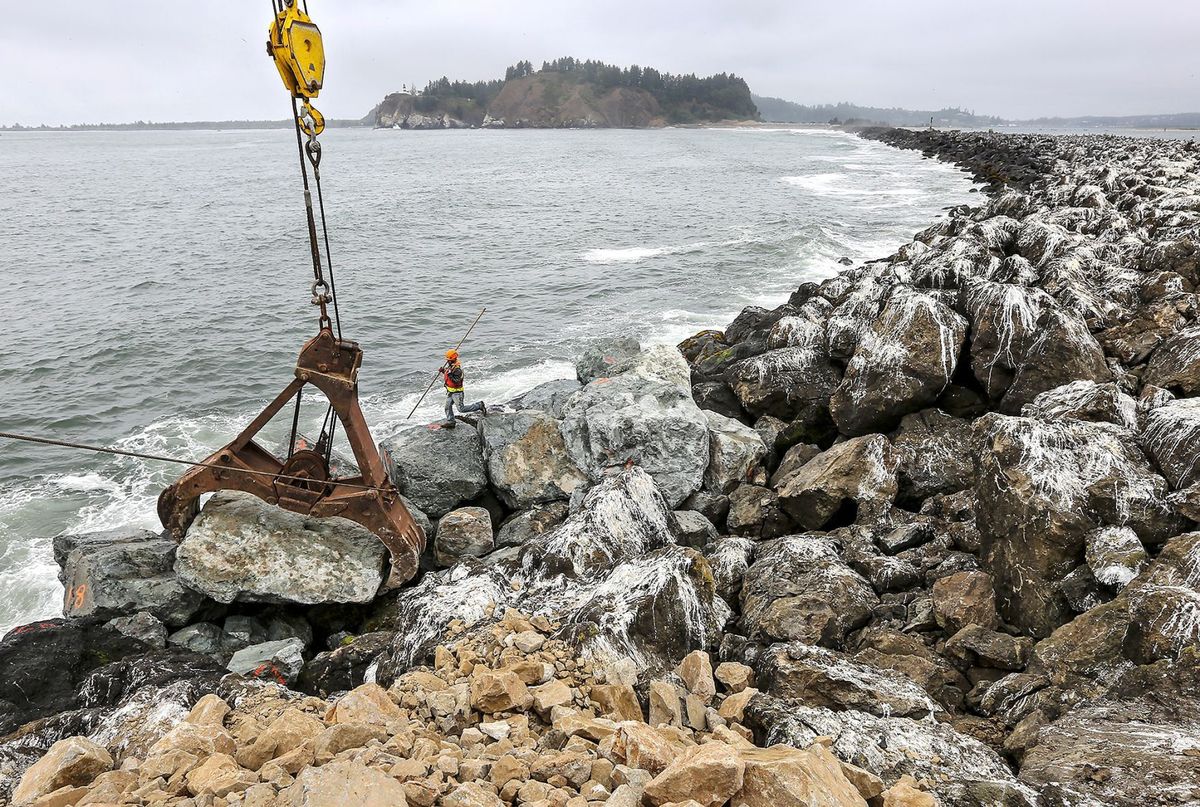ILWACO, WA — Jetty A, is a strip of rocks that is part of the system that has reshaped the flow of the Columbia River for more than a century, enabling ocean-going vessels to pass and billions of dollars in economic activity in the region to occur.
Each boulder that forms the jetty weighs as much as several cars, but that’s not enough to match the wrath of the water.
Jetty A, has lost 900 feet of length since it was last repaired in 1963.
TDN reports, this year the U.S. Corp of Engineers is rehabilitating the jetty, which stretches south from Cape Disappointment. The $19 million project with contractors Kiewit Corp. will lengthen and strengthen the jetty. It is part of a broader $300 million effort to restore the three jetties that channel the mouth of the river and help keep it free of shoals.
Gusting wind, the roar of heavy machinery and the boom of boulders falling into dump trucks nearly masks the sound of crashing waves below. The dense meta-besalt boulders are drilled and blasted out of the Beaver Lake Quarry, located about 250 miles away in Mount Vernon, Wash. They’re trucked to Anacortes and then carried down the coast to the jetty in 300-foot long barges, said Brion Hanks, Kiewit Corp. project manager.
An crane with a grapple hoists the boulders off the barge and onto the back of dump trucks, which trundle down an access road to a storage yard. The rocks are spray painted in orange with numbers denoting their weight in tons from 6 to 28 and hauled out to the jetty when needed.
Another crane moves the rocks into place, with the grapple operating like a robotic hand you would see in an arcade machines. There is a GPS system and a man working as a spotter to help place the stone in exactly the right spot. The contractor tries to wedge the stones together to make them more able to resist wave action.
The project will stabilize the jetty and extend it 200 feet. The Corps learned that the other now-disappeared 700 feet is not needed, Otto said. Still, the rehabilitation project require six barge loads and 82,000 tons of new stone, Honks said. That’s equal to the weight of about 41,000 cars.

Together, there are three jetties helping to reshape the flow of the river. They also have narrowed mouth of the rive, boosting velocity of the river. That helps flush sediment out into the ocean. Without the jetties, much more dredging would be necessary to keep the shipping channel open, Otto said
“It’s all for navigation, for making a safer transition coming from the Pacific Ocean, but more importantly … it helps keep this deep draft channel clear of sediment,” Otto said.
The jetties also act as buffer, decreasing the power of the waves rippling through the river.
“It makes … a little smoother transition as you’re coming into the Columbia-Snake River navigation system,” Otto said.
And while one observer jokes that the Corps is “just playing around with some rocks,” the project is vital for the Lower Columbia economy, supporting more than $20 billion of business activity annually.




